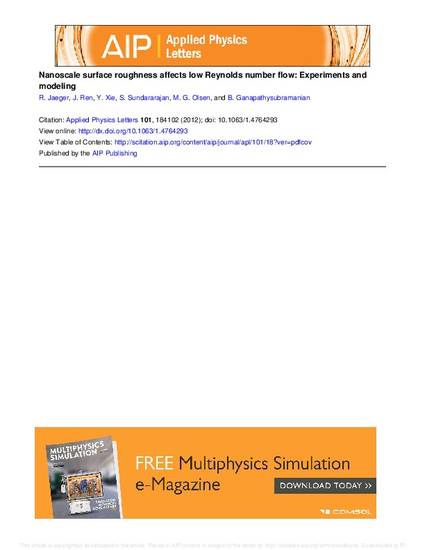
Most micro-channel fabrication strategies generate nano-to-micro-scale, stochastic surface roughness. This inherent stochasticity can potentially be harnessed to direct microfluidic operations such as self-cleaning behavior and localized mixing. This work investigates the effect of stochastic nanoscale roughness on low to moderate Reynolds number Newtonian flow using concurrent modeling and experiments. We fabricate a microscopic channel with tailored hydrofluoric-acid-etched rough surfaces. Optical profilometry and micro-particle-image-velocimetry (micro-PIV) are used to characterize the surface roughness and flow field and is integrated with direct numerical simulation that resolves effects of nanoscale roughness. Results indicate that nanoscale roughness causes flow perturbations that extend up to the mid-plane and is insensitive to flow-rates.
Available at: http://works.bepress.com/baskar-ganapathysubramanian/3/

The following article appeared in Applied Physics Letters 101 (2012): 184102, doi:10.1063/1.4764293.